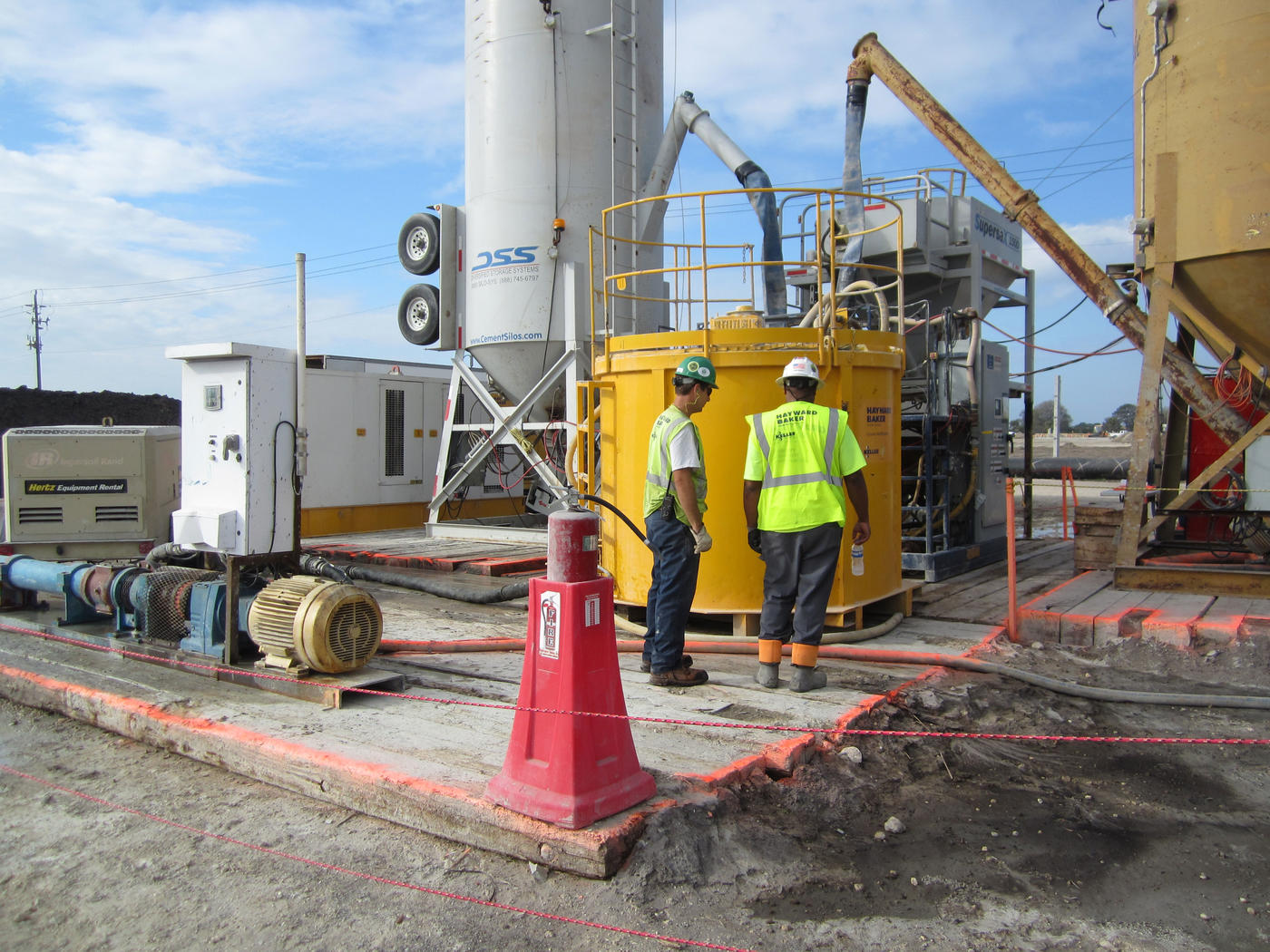Phosphate contamination of the groundwater beneath a proposed LNG equipment manufacturing facility required groundwater control. A vibrated beam slurry wall was installed to prevent water contamination during dewatering.
The project
A 300,000 sq. ft. liquefied natural gas (LNG) equipment manufacturing facility was planned at a 30-acre site in Palmetto, Florida. Construction included a 4.6-acre stormwater management pond requiring excavation below the water table.
The challenge
Leakage from a former phosphate facility had resulted in contamination of groundwater. The bottom of the planned pond extended about 20 feet below the water table, excavations to this depth would require dewatering. Without an engineered solution, dewatering could cause movement of the contamination plume. Construction required a subsurface groundwater cutoff wall. The subsurface profile consisted of fine sand and clayey silty fine sand to depths of 17 to 22 feet. This layer was underlain by sandy clay.
The solution
Prior to construction, cone penetration tests (CPTs) were performed to obtain additional data and more thoroughly define the site subsurface conditions along the alignment.
A 28-foot deep vibrated beam slurry wall was designed and installed along the 2,200 linear foot perimeter of the planned pond, embedded a minimum of 3 feet into the confining clay layer. The wall was constructed of cement-bentonite slurry with a permeability of less than 1x10-6 cm/s.
The vibrating beam slurry wall eliminated the need for a dewatering system, which facilitated excavation and effectively cut off the new pond from the contaminated ground water. Testing throughout construction verified all parameters were met.
